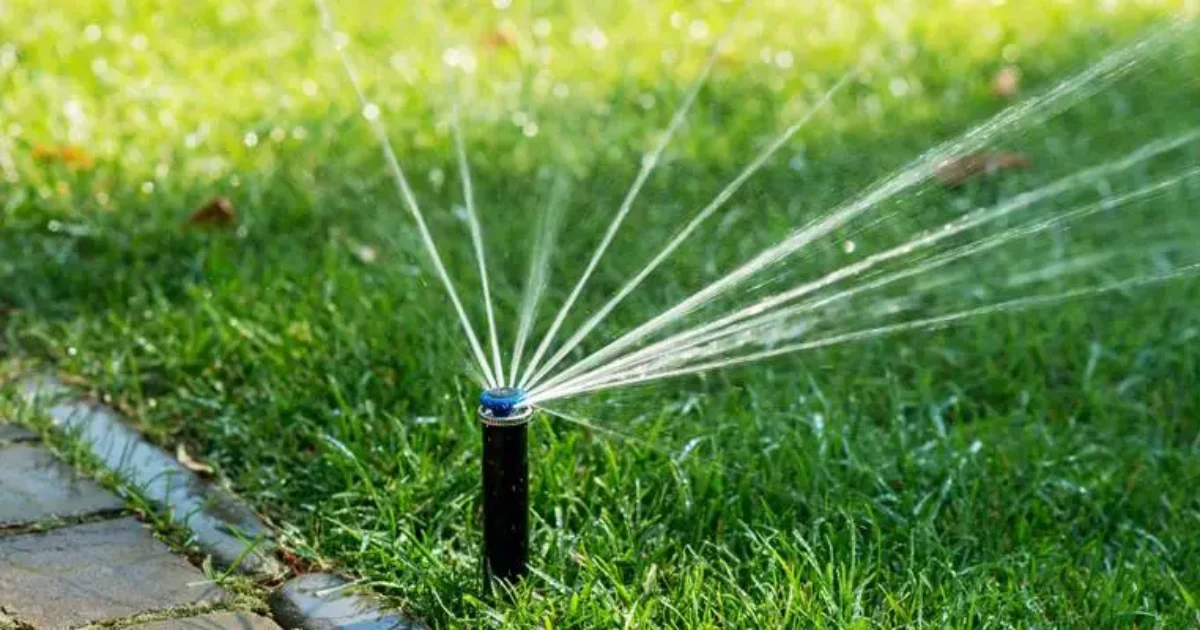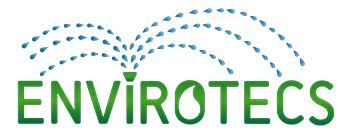
Did you know that nearly 50% of outdoor water in the U.S. is wasted due to inefficient irrigation? That’s thousands of gallons and dollars lost yearly, especially in places like Texas, where dry spells and scorching heat are the norm.
Choosing the right irrigation system isn’t just about watering your lawn. It’s about watering it right. Every detail matters from soil type and yard layout to plant needs and water pressure. In this expert guide, we’ll walk you through exactly how to choose the right solution and what to look for in a Texas irrigation supply that fits your property’s exact needs.
At Wise Water Works, we specialize in custom irrigation solutions that save water, lower costs, and make your yard thrive. Keep reading and make a smart choice for your landscape.
Why Choosing the Professional Irrigation System Matters?
A professionally installed irrigation system is designed to match your landscape’s exact needs, something off-the-shelf kits can’t offer. Before setup, licensed installers perform flow rate testing, soil percolation analysis, and pressure zone mapping.
This ensures water is distributed evenly, avoiding dry spots, runoff, and overwatering. They also install matched precipitation rate nozzles and backflow prevention devices, all critical details most DIY systems miss.
According to the Irrigation Association, professional systems use up to 30% less water than basic installations. Zones are customized based on plant type, sun exposure, and slope to support long-term plant health. Smart controllers and rain sensors are also calibrated correctly from the start.
7 Major Factors to Consider for Choosing the Best Irrigation System for Texas Property
Choosing the right system starts with understanding your landscape’s needs. These key factors will guide you toward the best solution from a reliable Texas irrigation supply provider.
1. Water Efficiency and Local Restrictions
Water efficiency is paramount in Texas, where droughts are frequent, and water restrictions are becoming stricter. Texas is one of the driest states in the U.S., with average annual rainfall as low as 18 inches in areas like West Texas.
During peak summer, some parts of Texas can go without rain for weeks, making irrigation necessary.
To combat this, smart controllers, drip irrigation, and rain sensors offer precise watering, reducing waste by adjusting schedules based on weather forecasts and soil moisture levels. Cities like Austin have enforced limits to conserve water, such as twice-a-week watering.
Additionally, many local municipalities impose fines for excessive water usage during restricted periods.
2. Automatic Sprinkler vs Drip vs. Smart Systems
Not all irrigation systems work the same, and depending on your lawn, garden, and lifestyle, one might work better than the others. Below is a side-by-side comparison to help you see the clear differences and decide what best fits your yard.
| Feature | Automatic Sprinkler System | Drip Irrigation System | Smart Irrigation System |
| Best For | Lawns, large open areas | Gardens, flower beds, shrubs | Any yard – especially with changing weather |
| Water Delivery | Sprays water over a large area | Delivers water directly to plant roots | Adjusts water delivery based on weather & soil |
| Water Efficiency | Moderate | High | Very High |
| Installation Complexity | Moderate | Moderate to High | Moderate to High |
| Upfront Cost | Lower | Moderate | Higher |
| Maintenance Needs | Occasional cleaning, nozzle checks | Frequent checks for clogs or leaks | Software updates, sensor checks |
| Control Options | Manual or timer-based | Timer-based or manual | App-based, weather-integrated, remote control |
| Weather Responsiveness | No | No | Yes – auto-adjusts for rain, heat, etc. |
| Water Waste | Can lead to runoff/overspray | Minimal if installed correctly | Very little – only waters when needed |
3. Climate and Weather Conditions
Texas’ climate can be challenging, with everything from dry heat in the west to humid conditions in the east. If you’re in West Texas, you know how quickly temperatures can soar over 100°F during summer.
A system that provides deep watering and minimizes evaporation is key to keeping your lawn and garden thriving in this heat. Drip irrigation or smart sprinklers that adjust based on temperature can ensure your plants get just the right amount of water, no matter the weather.
Conversely, if you live in the eastern parts of Texas, frequent rainfall can make overwatering a concern. Tailoring your irrigation system to these local climate conditions will save water and keep your plants healthy throughout the year.
4. Soil Type & and Drainage System
Your soil type and drainage system greatly affect how well your irrigation system works. Texas has a mix of sandy, clay, and loamy soils, each requiring a different approach. Sandy soil drains quickly, so it needs more frequent watering to keep plants hydrated.
Working with clay soil retains water for longer periods, so water less often to avoid pooling and root rot.
Loamy soil, which is a mix of sand, silt, and clay, is ideal for most plants and works well with most irrigation systems. Additionally, a proper drainage system is crucial. Poor drainage can lead to waterlogging, while good drainage ensures water reaches the roots without causing damage.
5. Lawn Size & Shape
When choosing an irrigation system, consider your lawn’s size and shape. For larger lawns, you may need a more complex system with multiple zones to ensure every area gets the right amount of water.
A center pivot or rotary sprinkler system works best for expansive, open lawns. If your lawn has a lot of curves or irregular shapes, you might want to use pop-up sprinklers or a drip irrigation system for more precise watering in smaller, hard-to-reach areas. Smaller lawns, on the other hand, can often thrive with a single-zone system.
6. Durability and Long-term Reliability
Durability and long-term reliability are crucial when choosing an irrigation system, especially in Texas. With the extreme summer heat, occasional storms, and strong winds, you need a system that can withstand it all without constant repairs.
Think about your investment in the long run. Choosing high-quality materials like stainless steel and UV-resistant components means fewer issues and a lasting system.
With weatherproof controllers and sturdy sprinkler heads, you’ll enjoy less maintenance and more time spent enjoying your healthy, vibrant lawn. Plus, consider how your system’s parts, like hoses and emitters, will perform over time in Texas’s harsh climate.
7. Determine Your Budget and Installation Costs
Determining your budget and installation costs is crucial to selecting the right irrigation system. It’s important to balance the initial investment with long-term savings. Systems like drip irrigation or smart controllers might cost more upfront but can significantly reduce your water bills over time.
Larger properties may require more extensive systems, which increases installation costs.
| System Type | Upfront Cost | Installation Cost | Maintenance Cost (Annually) | Long-Term Savings |
| Drip Irrigation | $500 – $3,000+ | $200 – $800 | $50 – $150 | Saves up to 50% on water bills |
| Smart Controllers | $100 – $400 | Included in system | $20 – $50 | Reduces water waste, lowers energy costs |
| Sprinkler Systems | $200 – $1,500 | $300 – $1,500 | $50 – $100 | Water savings with proper adjustments |
| Pop-up Sprinklers | $150 – $500 | $100 – $500 | $30 – $60 | Efficient for large lawns, reduces water waste |
Other Key Considerations for Choosing an Irrigation System in Texas

Picking the right irrigation system means understanding your yard’s unique needs. Here’s a detailed look at what matters and the best system choices to save water and keep plants thriving.
- Local Water Quality: High mineral content or sediments in water cause build-up that clogs emitters and valves. Drip irrigation with built-in filters reduces maintenance and protects system longevity. Regular flushing prevents costly repairs.
- Water Source Availability: City water offers steady pressure, but wells or rain catchment often have limited flow. Drip irrigation and low-pressure sprinklers operate well on lower pressure, preventing uneven watering and pump strain common with mismatched systems.
- Automation Features: Smart irrigation uses weather data and soil moisture sensors to adjust watering. Studies show this can cut water use by 20-30%, reducing waste from overwatering and saving you money without lifting a finger.
- Eco-Friendly Options: Using pressure-regulated emitters or integrating rainwater harvesting reduces runoff and conserves water. Systems certified by EPA WaterSense can save up to 15% on outdoor water use in drought-prone regions.
- Customizable Zones: Your lawn, flower beds, and shade plants all have different water needs. Zoning your system with automatic sprinklers or smart controllers means each area gets the right amount, avoiding stressed plants for soggy soil.
- Evaporation Rates: In hot climates, watering midday can waste over 30% of water to evaporation. Drip irrigation delivers water directly to roots, while smart systems schedule watering during cooler hours, maximizing moisture retention.
- Plant Types and Needs: Different species need tailored watering. Turfgrass requires shallow, frequent watering, while trees and shrubs benefit from deeper, less frequent irrigation. Combining sprinklers, drip lines, and smart controls meets these diverse demands efficiently.
Expert Maintenance Tips for Your Irrigation System
Regular irrigation system maintenance ensures optimal performance, water efficiency, and a thriving landscape. Here are key tips to keep your system in top shape:
- Check for leaks, clogged nozzles, or damaged components monthly to catch issues early.
- Remove debris from nozzles and filters to maintain proper water flow and coverage.
- Ensure heads are properly aligned to avoid watering sidewalks or driveways.
- Verify pressure is within the recommended range to prevent damage or inefficient watering.
- Ensure valves open and close properly, and the controller is programmed for seasonal needs.
- Drain pipes and shut off the water supply before freezing temperatures to prevent pipe bursts.
- Look for unexpected increases in water bills, which may indicate leaks or inefficiencies.
- Have a certified technician service your system annually for thorough maintenance.
- Replace outdated or inefficient parts, like old sprinkler heads, with water-saving models.
In Closing
Choosing the right irrigation system for your Texas property means thinking beyond the basics. From understanding your soil and water source to factoring in climate, zoning, and plant types each choice impacts performance and savings.
A well-matched system protects your landscape, cuts water waste, and lowers your long-term costs. Smart planning now prevents future repairs, dead patches, and rising water bills.
If you’re ready to take the guesswork out of irrigation, let WiseWater.Works design a system tailored to your needs. Contact us today and discover how efficient watering can transform your lawn, your budget, and your peace of mind.
Frequently Asked Questions
1. How do I know if my yard needs a new irrigation system?
Answer: If you see dry spots, soggy areas, or rising water bills, your system may be outdated or poorly designed. A professional inspection can reveal whether a full upgrade or just a few fixes are needed.
2. Can I use my irrigation system during a drought or water restrictions?
Answer: Yes, if it’s designed right. Smart irrigation systems with weather sensors and zone control comply with most local restrictions and use up to 50% less water than traditional methods.
3. What’s the average lifespan of an irrigation system?
Answer: With regular maintenance, most systems last 15–20 years. However, depending on usage and water quality, components like sprinkler heads, valves, and controllers may need replacement every 5–10 years.
4. How often should an irrigation system be inspected?
Answer: It’s a good idea to check your system at least twice a year—once in spring before peak use, and again in fall before winterizing. This helps catch clogs, leaks, or controller issues early.
5. Is it worth upgrading to a smart irrigation controller?
Answer: Absolutely. Smart controllers adjust watering based on local weather and soil conditions. They can cut outdoor water use by up to 30%, saving money and improving plant health over time.
